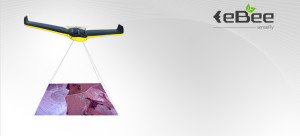
An MIT PhD candidate has developed a drone that self-charges by landing on power lines. The drone is equipped with a magnetometer which detects magnetic fields given off by power lines. From there, its just a matter of tapping into the power. No word yet on how electric companies would feel about having their product stolen and powering the get-away vehicle. Full story here…
Thermal images captured by a drone led archaeologists to discover never-before-seen structures in a thousand year old Native American settlement, known as Blue J, buried under the New Mexican desert. “This work illustrates the very important role that UAVs (unmanned aerial vehicles) have for scientific research,” Jesse Casana, an archaeologist from the University of Arkansas, told the Huffington Post. “When legislators think about use of technology, they often don’t think about science. They need to come up with some regulations. Until they do, it’s really kind of hamstringing science.”
Forbes contributor Sean Lawson wrote a fantastic OpEd called in which he discusses how it is time the FAA gave up on its charade of control. He astutely points out that “the first, most obvious point to make here is that a lack of rules does not serve as a foundation for banning an activity. In fact, it is just the opposite. The use of a new technology is legal until the government makes it illegal or regulates its use in some way, not the other way around.”
Alan is serial entrepreneur, active angel investor, and a drone enthusiast. He co-founded DRONELIFE.com to address the emerging commercial market for drones and drone technology. Prior to DRONELIFE.com, Alan co-founded Where.com, ThinkingScreen Media, and Nurse.com. Recently, Alan has co-founded Crowditz.com, a leader in Equity Crowdfunding Data, Analytics, and Insights. Alan can be reached at alan(at)dronelife.com